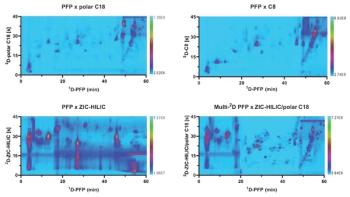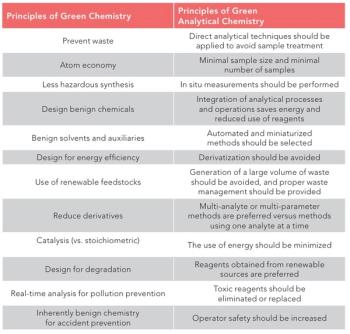
- March 2025
- Volume 21
- Issue 1
- Pages: 6
Separation Science Companies Confront New Uncertainties in 2025
Chromatography companies recognize significant opportunities in the biotech and pharma sectors, yet face uncertainty driven by rising tariffs and the growing integration of AI tools.
Chromatography instrument manufacturers are navigating uncertainty driven by rising tariffs and political instability, yet many companies continue to find growth opportunities in industries like pharma and biotech.
Breakthroughs in proteomics and metabolomics, for example, have spurred a growing demand for advanced chromatography instruments essential for complex analyses. The pharmaceutical and life sciences sector remains the largest market and a key growth driver for the industry (1). In 2023, for example, the pharma industry made up more than half, (55.4%) of the market, the largest revenue share, according to a report from Grand View Research (1).
Liquid chromatography (LC) holds the largest revenue share in the chromatography market (1) due to its pivotal role in drug development. Gas chromatography (GC) also remains popular, while supercritical fluid chromatography (SFC) is an emerging technique gaining traction for its ability to accelerate analysis (1).
Despite a robust pipeline of opportunities in the pharmaceutical and biotech sectors, analytical instrument companies face uncertainty moving into 2025 amid U.S. President Donald Trump's push for increased tariffs on goods from key U.S. trading partners such as China, Mexico, and Canada. Government cuts in funding for scientific research worldwide also continue to impact both STEM jobs and vital research efforts.
Despite the uncertainty, many executives remain optimistic in their ability to navigate and manage change amid political headwinds. During the company’s Q4 earnings call, which took place in late January, Marc Casper, CEO of Thermo Fisher Scientific, said he felt positive about the business environment moving into 2025.
“What I'm very excited about is the business environment, particularly in the US, is going to be much more business-friendly with much more of a focus on economic growth,” he said on the earnings call (2). “From a mergers and acquisitions (M&A) perspective, we're likely to see a much more reasonable environment from a regulatory perspective. And when I think about what our company does and what our customers do, science and medicine are unbelievably important, and they're not discretionary. And therefore, we're excited about it, and we'll navigate whatever the environment holds.”
The Impact of AI
Like many industries today, separation science is also experiencing increased disruption from emerging technologies such as artificial intelligence (AI) or machine learning (ML).
“AI is a big topic in the analytical community,” said Mark Hayes, a professor in the School of Molecular Sciences at Arizona State University. In the lab, ML can make it easier to analyze complex or big data sets, Hayes said. Many sessions at industry conferences like Pittcon have attracted large crowds of scientists eager to learn how they can integrate these tools into their daily work.
Generative AI could also have far-reaching impacts on business operations at companies worldwide. Some instrument vendors, for example, are experimenting with using generative AI tools internally to improve the customer experience. Thermo Fisher Scientific is encouraging employees to integrate generative AI into business processes.
“Our colleagues around the world are actively deploying gen AI, finding new ways to improve the customer experience, streamline internal processes, and enhance our products and services,” Casper said.
AI is also set to have a transformative impact on the customers of many analytical science vendors. In pharma, generative AI is expected to produce $60 billion to $110 billion in annual value across the value chain, from early research and drug discovery to commercialization, according to a
As clients and industry partners navigate these changes, chromatography companies must adapt processes to stay ahead of the curve in the face of rapidly advancing technologies. The increasing integration of AI, automation, and other innovations presents both challenges and opportunities for the industry. As leaders respond to these shifts, their ability to manage technological disruptions, embrace new tools, and align with emerging trends will be essential for maintaining a competitive edge.
References
- Chromatography Instruments Market Size Report, 2030. https://www.grandviewresearch.com/industry-analysis/chromatography-instruments-market-report (accessed 2025-03-06).
- https://seekingalpha.com/article/4753402-thermo-fisher-scientific-inc-tmo-q4-2024-earnings-call-transcript (accessed 2025-03-06).
- Viswa, C. A.; Bleys, J.; Leydon, E.; Shah, B.; Zurkiya, D. Generative AI in the Pharmaceutical Industry: Moving from Hype to Reality. https://www.mckinsey.com/industries/life-sciences/our-insights/generative-ai-in-the-pharmaceutical-industry-moving-from-hype-to-reality (accessed 2025-03-06).
Articles in this issue
Newsletter
Join the global community of analytical scientists who trust LCGC for insights on the latest techniques, trends, and expert solutions in chromatography.




